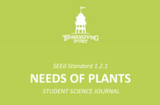
This activity is a science journal that includes blank space for plant investigation, observation & results.
- Subject:
- Science
- Material Type:
- Activity/Lab
- Provider:
- Reimagine Teaching
- Provider Set:
- Thanksgiving Point
- Date Added:
- 11/13/2020

This activity is a science journal that includes blank space for plant investigation, observation & results.
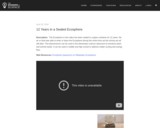
Science Phenomena: 2nd grade - Biodiversity and Ecosystems
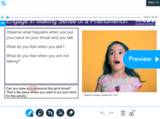
This is an interactive, first-grade Nearpod lesson tied to SEEd standard 1.3.1. It guides students through information and activities about investigating the cause and effect relationship between sound and vibrating matter.
This resource is a student-ready, three-dimensional SEEd science lesson you can add to your Nearpod library. Many of the phenomena, text, and images come from UEN OER textbooks, Seedstorylines.org, ck12.org, and pixabay.com. Most videos are from youtube.com or pbslearningmedia.org. Many of the simulations were found at phet.colorado.edu, ck12.org, and pbslearningmedia.org. This lesson is unique to Nebo School District but was built with the help of many amazing ideas from teachers throughout Utah.
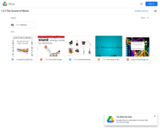
Google folder with Googles Slides and accompanying studnent journal files
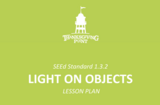
Use a model to show the effect of light on objects. Emphasize that objects can be seen when light is available to illuminate them or if they give off their own light.
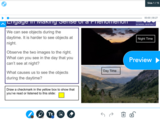
This is an interactive, first-grade Nearpod lesson tied to SEEd standard 1.3.2. It guides students through information and activities about using a drawing (model) to show the effect of light on objects.
This resource is a student-ready, three-dimensional SEEd science lesson you can add to your Nearpod library. Many of the phenomena, text, and images come from UEN OER textbooks, Seedstorylines.org, ck12.org, and pixabay.com. Most videos are from youtube.com or pbslearningmedia.org. Many of the simulations were found at phet.colorado.edu, ck12.org, and pbslearningmedia.org. This lesson is unique to Nebo School District but was built with the help of many amazing ideas from teachers throughout Utah.
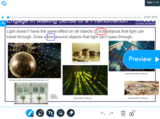
This is an interactive, first-grade Nearpod lesson tied to SEEd standard 1.3.3. It guides students through information and activities about investigating that light can travel through some materials, can be refelcted off some materials, and some materials block light causing shadows.
This resource is a student-ready, three-dimensional SEEd science lesson you can add to your Nearpod library. Many of the phenomena, text, and images come from UEN OER textbooks, Seedstorylines.org, ck12.org, and pixabay.com. Most videos are from youtube.com or pbslearningmedia.org. Many of the simulations were found at phet.colorado.edu, ck12.org, and pbslearningmedia.org. This lesson is unique to Nebo School District but was built with the help of many amazing ideas from teachers throughout Utah.
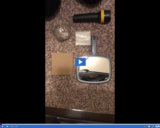
Plan and carry out an investigation to determine the effect of materials in the path of a beam of light. Emphasize that light can travel through some materials, can be reflected off some materials, and some materials block light causing shadows. Examples of materials could include clear plastic, wax paper, cardboard, or a mirror.

Google folder with Google Slides and accompanying student journal files
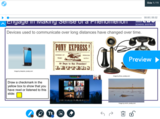
This is an interactive, first-grade Nearpod lesson tied to SEEd standard 1.3.4. It guides students through information and activities about designing a device that uses sound or light in its structure to communicate over a distance.
This resource is a student-ready, three-dimensional SEEd science lesson you can add to your Nearpod library. Many of the phenomena, text, and images come from UEN OER textbooks, Seedstorylines.org, ck12.org, and pixabay.com. Most videos are from youtube.com or pbslearningmedia.org. Many of the simulations were found at phet.colorado.edu, ck12.org, and pbslearningmedia.org. This lesson is unique to Nebo School District but was built with the help of many amazing ideas from teachers throughout Utah.
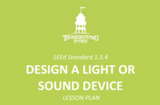
Design a device in which the structure the device uses light or sound to solve the problem of communicating over a distance. Define the problem by asking questions and gathering information, convey designs through sketches, drawings, or physical models, and compare and test designs. Examples of devices could include a light source to send signals, paper-cup and-string telephones, or a pattern of drumbeats.

This video adapted from the Valdez Museum & Historical Archive, explores what happened during the Great Alaska Earthquake of 1964 through original footage, first-person accounts, and animations illustrating plate tectonics.
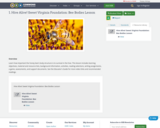
This lesson plan allows students to read about bee bodies, draw, label, and describe bee body parts.
Lesson plan from OER Commons via Sweet Virginia Foundation
https://www.oercommons.org/courseware/lesson/75846/overview
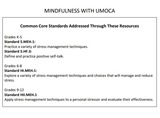
The Utah Museum of Contemporary Art has provided this lesson plan to accompany the three 2022 mindfulness videos. This lesson plan covers how students can respond to and further develop the concepts explored in the videos. The lesson plans covers stress management, positive self-talk, breathing and more.

Google folder with Googles Slides and accompanying studnent journal files

This is a second-grade student science experience tied to SEEd standard 2.1.1. In this experience students use models to obtain information about the patterns in shapes of canyons.
These experiences were designed to support students in engaging in science investigations with siblings and/or parents at home and then report back about what was discovered. They were created in a way that is easily adaptable for both online and printed formats. They are formatted to help students wonder about and investigate the science phenomena happening in the world around them. These experiences do not describe how students should write up and return work to their teacher. It is up to each teacher to adapt them to best meet student needs. When individualized by the teacher, a student could be asked to engage in one or more of these experiences a week and report back. This format aligns closely to the vision and expectation of the SEEd standards.

This is a second-grade student science experience tied to SEEd standard 2.1.2. In this experience students construct explanations about what changes to EarthÕs surface occur quickly or slowly.
These experiences were designed to support students in engaging in science investigations with siblings and/or parents at home and then report back about what was discovered. They were created in a way that is easily adaptable for both online and printed formats. They are formatted to help students wonder about and investigate the science phenomena happening in the world around them. These experiences do not describe how students should write up and return work to their teacher. It is up to each teacher to adapt them to best meet student needs. When individualized by the teacher, a student could be asked to engage in one or more of these experiences a week and report back. This format aligns closely to the vision and expectation of the SEEd standards.
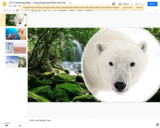
Desription

This is a second-grade student science experience tied to SEEd standard 2.2.2. In this experience students investigate how the structure of the body parts of fish help them to function and survive.
These experiences were designed to support students in engaging in science investigations with siblings and/or parents at home and then report back about what was discovered. They were created in a way that is easily adaptable for both online and printed formats. They are formatted to help students wonder about and investigate the science phenomena happening in the world around them. These experiences do not describe how students should write up and return work to their teacher. It is up to each teacher to adapt them to best meet student needs. When individualized by the teacher, a student could be asked to engage in one or more of these experiences a week and report back. This format aligns closely to the vision and expectation of the SEEd standards.
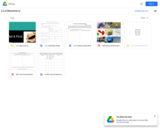
Google folder with Googles Slides and accompanying studnent journal files